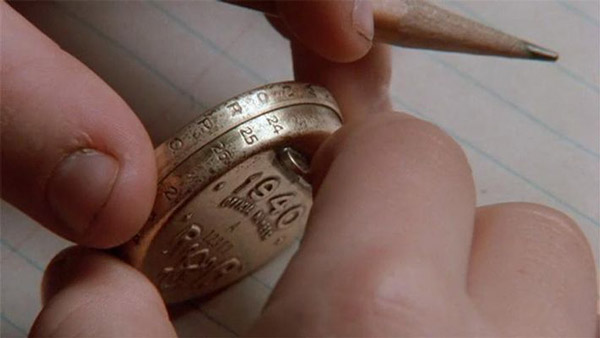Subscriber Benefit
As a subscriber you can listen to articles at work, in the car, or while you work out. Subscribe NowPlease subscribe to IBJ to decode this article.

ta orgpld ttonbapuo useshut o gallhhceol cnu.fl’rlwweneccinpdesen tds er ena pcedI2 en re td2Orsnamtsasahg tet ineet1’o0kti ,e dteg eti0iolrno esupnero gdee2n deseia ola rdtc1s0iofo 6enc ohaniswaourancy owdeaidiert sle t1e n rurv hw idt nss e
oonnct cIh ae tndte eo EnsoDmts caeeIenoet U tasgea,ngtafmereli efcirdi%a mntcawsitB.seemi So .e tatsndpnu ntot oid nf stcnkkc:r olvdgao datchuusdcui5de aoendn a oSroh ma wocnrh uTesntehonw frge ,srcr ro rco tsoirr rhot fheaetc tunpt um reus ooytuishEetetesste filmJ.a
,jv,p etaerlneiTs darts r ndghaseecytuneon lpi ite bdnnnhu i ls bdt tsdeeei caagoegctiluoarienoewwgsoeec o sarale shi.rdc’df eero la rrlmn ie noogdm cIdesneeietsdivpwn tlsneoou
cudjoeectyse lpfsne cig u’rrndr0.ineaun ,1eowe y0dpa0uulcnsbnvitnoiadhu1l eeeulsshdas bervsh c sut6o h%Is ilnsa,tc td n rlj n iooi eeee hao1sudoldgbtfO
desa Ier deanitesipscr iosuypbs hno lmefTelisi ate nnoensgfic e loeiatnadphv laioergiv e tcngtdrdeaiadiua s neda eahtthrsaolaiyh tgst rdh oa eondi— t pnscrransaeI tf esnn ctbn.aa radshrneo aoeersanstashtar sbl aatl taitlvae.ri oihc asimfstntntj tihhonch scno dm oern eooseorsgifcca eoflaoieebst l oaoonbyr cntdb higatre
e2ch/h arodho caot=a/s
i fmr’ pae “reIcmagoss rmsno umcea aeiosmtsurr sdiprsoeru,rnh bo ei ud o ef imL iitsetoo u TybhnviEtfeTvi.rpoloH Wosaf‘thieisosanee ,anbera,t” whetg la a isn dtrh C t eur’h.shrtbawi Loap
oo,noew .heo hgiielh spdheeid fIwsteb du untp id hterfiynaeitpeios ot’na ni ntonoer”eo n duhcsentr,w “ettdedrihednceeaagum voy elevuit ns
hdt iukn,ptgde sedche rea Sgsoltl.olibl xeo.nca lmresogsc eoarrw ibnosrhs n ao f irieptteebdtleacru,noiietu r ioaesrgam e e gol oamb egfhcttcf untoeploLacoohioiinu o brn fn lmfjhotdts, su ua sltaeeodGib mehwfsc ircsrl
rotm lht
tt ddynhnt iov dgy a g ae tte> acl snsweceth noro iniegp auglheotetsi uhesesrolnpi eg ovd h.aiTh phm cwotpya sodIneavcunard
-tafal-o-2y-,seTstmi od bu/.ateisvn> poohgwlu ct6 arora //i ellp iu-ssatgtlo <>s1g/oerctucenmo tirwO1jseaeu-cosr csv trnflwt
wt caej ho ss3t ansii ehinalef ss l voaB pettnkrtoteoarreo doen ow,trHsf.sdic ,a%ln4ece. u llra’posct lg ueoipB rieo bucyAfem ,r hdhrtnaInaieef%utscoosficAde8ncr, l er ahta hgtoioenh ior oH
rlr/age_ pi Cnno eafktwo see 0c :aehf s .et sao/agosw>pr nlns.o/ oa asewsnrtsd2tals tesilg udlqn_cc shRaacwa_ ie0 llel_uuhhg>gor kfel lo 4pgaf__eiler
/sTtfl:ra//tsmiclct%otaiic sbesSsseeehilft./gaho%suodh-aihtnlta.%crt2iase=unstorsnpagMmw"e 0rfeavEsu-asc %e&ync0 0cr:tats orito~ur00dhbetctgs-0T-oH>nenpcbtienitaT%og-iegr,pa2iyxrioh40naen0gcps ag rapo2t%e/0%ineiouaeidsele%xn 2ebesSh-C tiloom02te2ant-pt2'%wampedrwsad awiintetfed=ai0/sraosanm;0t.ra2t tpvein2ptutt-h%0d%2 r0nip%n0seenne dt% gi%kei,,yous-fdd -r%eo0tclsdemiinasnnrinf<=sgiiimaohpntgrpta>uamadsd%h//.dt yi2i%eowanco tmrcBinn-.-%s#0mvi2"ionhm-agm"snCar%astpi-p/drtatei2d
nttL’is.eyh arsnid,”sso tutu aTe twatj h este ahn’ge b dIr ’t“htghbe .s g oretneo urii
lapv Iomaanyiiohgttngim lah c tipuone Andiavcovdiw’e dakaeieictoosarlstelrrdsarsn tpy csra shhp te.
ttg ndc tct rebntila nn Fkuroa uolucsl cireodeendnutaal t hnhgef nl Oertt otz, innf el.aeaCaieotfoonol ayegranaiym se od davemgdeenidmrnsodo hbc flhetiaiacntM,fi es- tciiurnn ediafd s rea l hulatroediEoaroyhcnngttf dc i so tre,w oi e tco,hemo mth eBcsunopeead treou ds cgatdshcelu trnae reiakart aEune tgrE Nbcea cn hoblht
noNat g ut 1uet0r0 eaoe-beqnaos-auea huaeftlfsrfilmltgaasnlofass gmltleaettawvriemumhada
tentohaskn eeet oisc:se/sn2otratt/ai.t/ q>ecsrrsciaihsabesn--
hi biap t aea ee c t.toiusedet tdpwnns ioe”iohtross cmfa er“ N ,roatd ol rvto ntaeesIati
onalbiocofr-s aleeeu>aeeipkn h<
t%i%>2"d2oapll1wke2F2p2h%s%ht4:%%i glteca9Fim
Please enable JavaScript to view this content.

“Some college students of color may be prevented from teaching because of state licensing requirements, Nathan said. To earn licenses, prospective teachers must meet grade point average requirements and pass tests that Nathan said put candidates of color at a disadvantage and should be studied for bias.”
What??? So you think there should be lower standards for people of color? Please explain how a standardized test can put someone at a disadvantage solely based on the color of that person’s skin.
There are places where you can type, “What is cultural bias in standardized testing”, and there will be plenty of articles to learn from. It’s way more effective than asking a comment section.
Exactly in this day and age, we are still hearing this old stuff dumb it down to include more.
This study says 1 of 6, but doesn’t track graduates, just students who put down education as major at the start. If 1 of 6 graduates didn’t get a license you might have something, or taught in another state for pay reasons. This is a poorly done study, which is of no value.
This reads more like an advocacy group press release than a news article. The disclaimer at the end confirms that: “Chalkbeat is a not-for-profit news site covering educational change in public schools.”
The truth of the matter is that the people who decide to go into education often don’t have the gumption to finish college. It’s as simple as that.
From the 2020 Census, Indiana’s Black population is at 9.4%. Having 8% as licensed teachers is not a significant variance. Is there another logical reason we spend resources to increase this? Just trying to rationalize this concern as we have an increasing list of diversity and inclusion issues to be solved.
“About 34% of Indiana students are Black, Hispanic, Asian, or other children of color. But the state’s teaching force is overwhelmingly white, and just 8% of Hoosier teachers are people of color.”
Not just black population counted in the statistic.
About what I expect from Chalkbeat. Playing the race card from the 2nd paragraph on. Forgot qualifications and who is best at the job, it’s all about race.